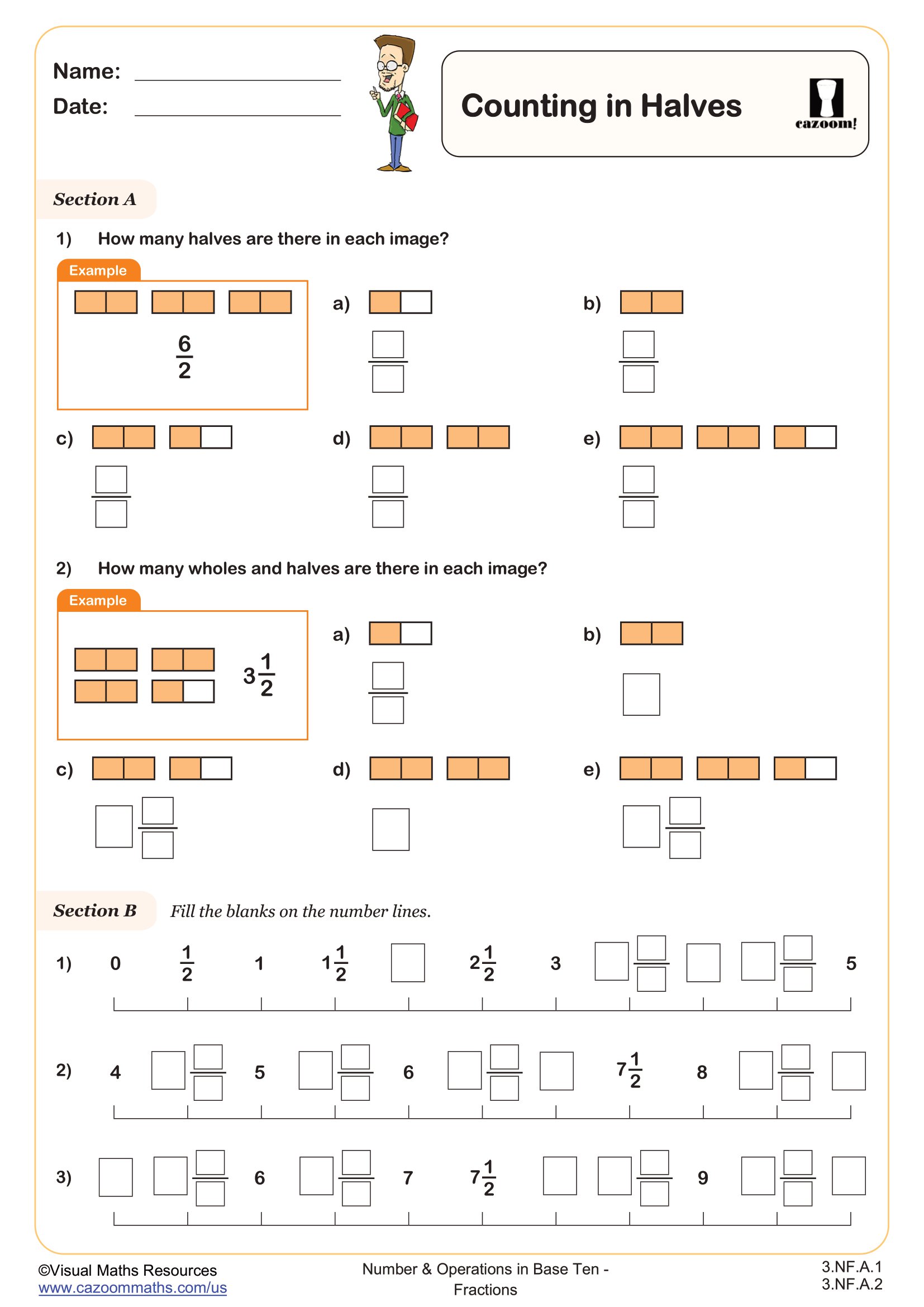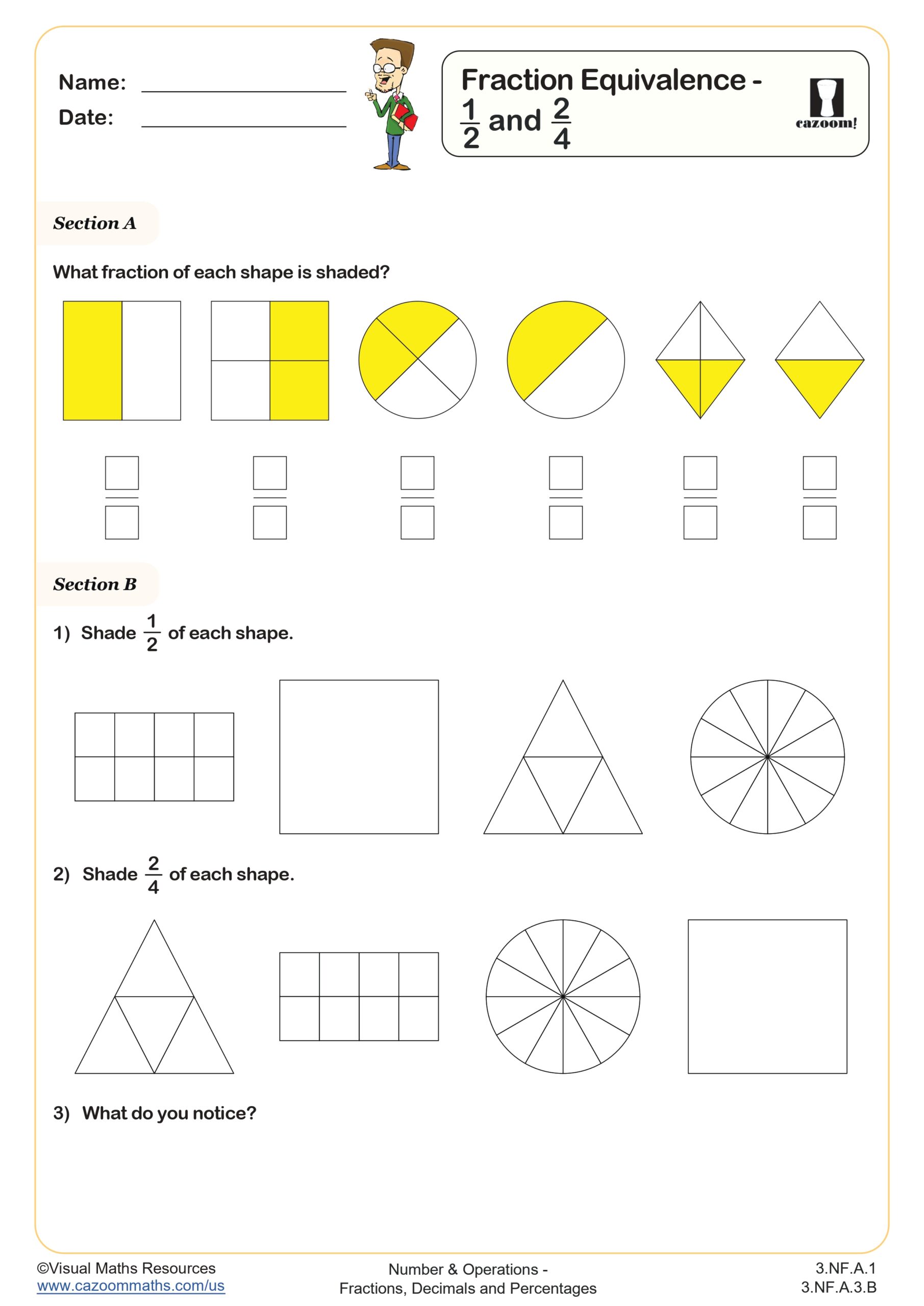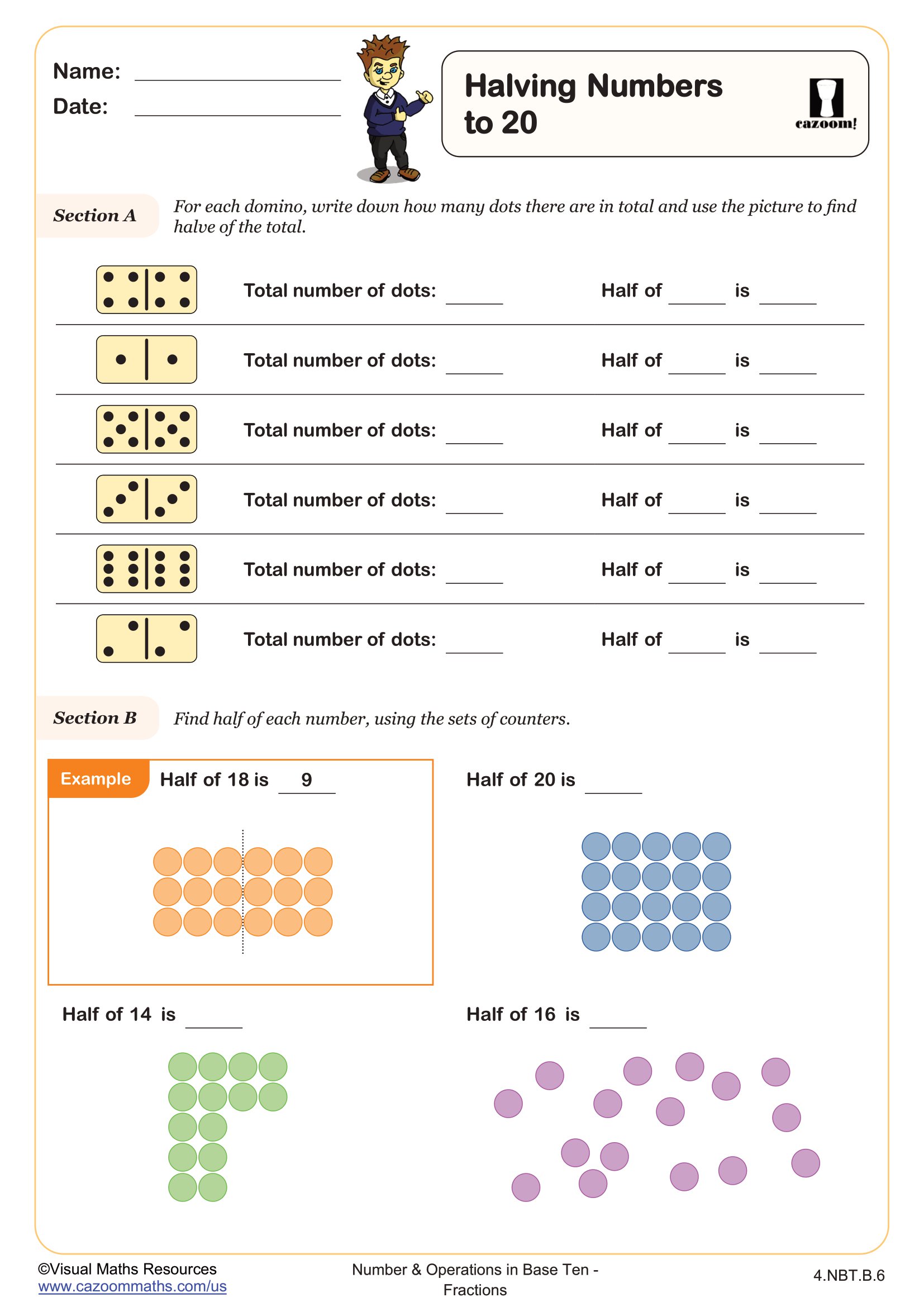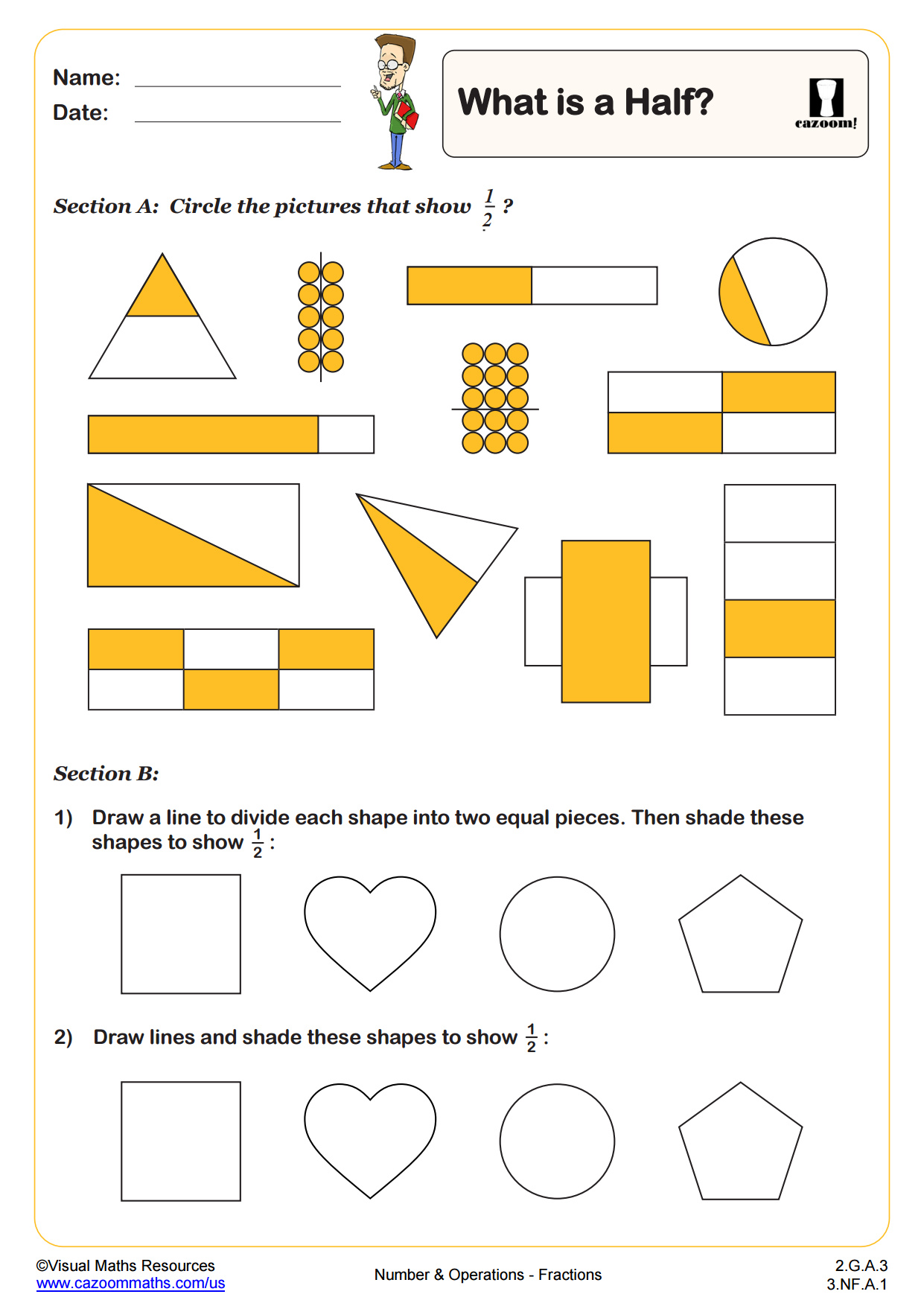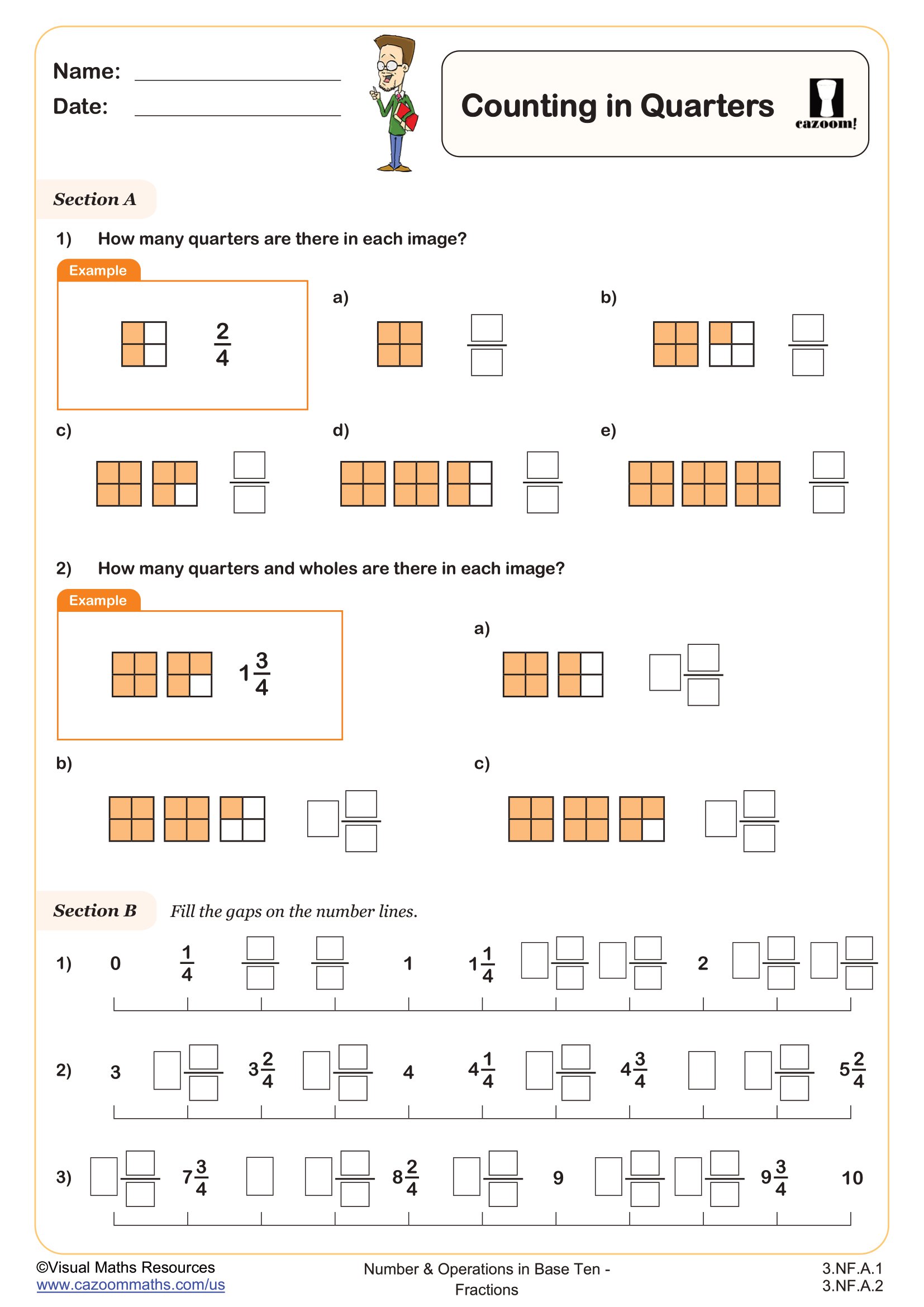Back to:
Counting in Halves WORKSHEET
Suitable for Grades: 3rd Grade
CCSS: 3.NF.A.1, 3.NF.A.2
CCSS Description: Understand a fraction 1/b as the quantity formed by 1 part when a whole is partitioned into b equal parts; understand a fraction a/b as the quantity formed by a parts of size 1/b.
Understand a fraction as a number on the number line; represent fractions on a number line diagram. a. Represent a fraction 1/b on a number line diagram by defining the interval from 0 to 1 as the whole and partitioning it into b equal parts. Recognize that each part has size 1/b and that the endpoint of the part based at 0 locates the number 1/b on the number line.b. Represent a fraction a/b on a number line diagram by marking off a lengths 1/b from 0. Recognize that the resulting interval has size a/b and that its endpoint locates the number a/b on the number line.
Understand a fraction as a number on the number line; represent fractions on a number line diagram. a. Represent a fraction 1/b on a number line diagram by defining the interval from 0 to 1 as the whole and partitioning it into b equal parts. Recognize that each part has size 1/b and that the endpoint of the part based at 0 locates the number 1/b on the number line.b. Represent a fraction a/b on a number line diagram by marking off a lengths 1/b from 0. Recognize that the resulting interval has size a/b and that its endpoint locates the number a/b on the number line.
Counting in Halves WORKSHEET DESCRIPTION
This worksheet is designed to help students understand and practice the concept of counting in halves.
To begin, learners are asked to determine how many halves there are in each image. This question is designed to help students visualise and count halves. This progresses to students being required to identify how many wholes and halves are present in each image. It aims to reinforce the understanding of halves in relation to whole numbers.
Section B focuses on number lines and requires students to fill in the gaps on these lines. Number lines play a crucial part in understanding the sequential nature of halves and will aid students in counting to 10 in fractions.
